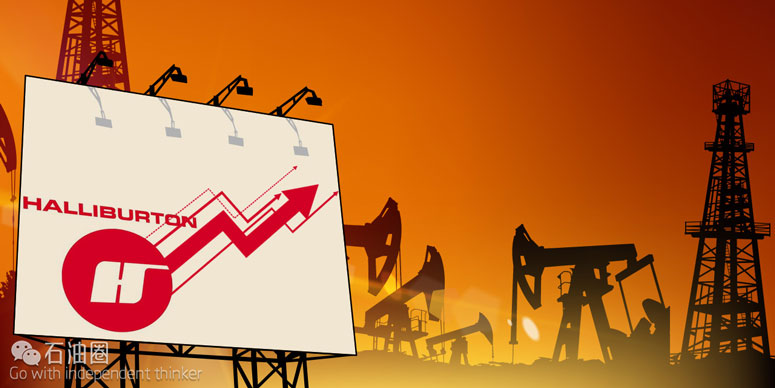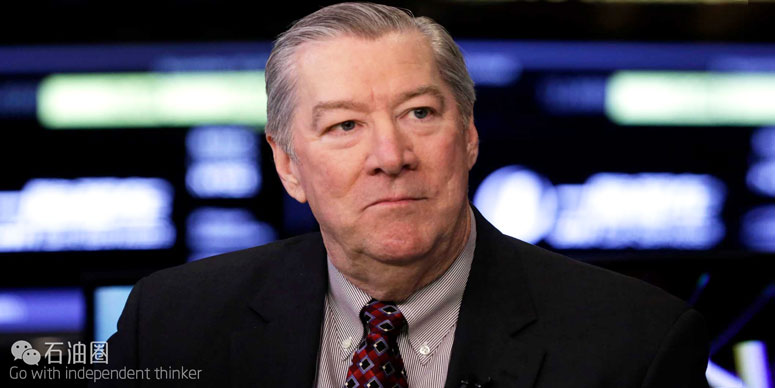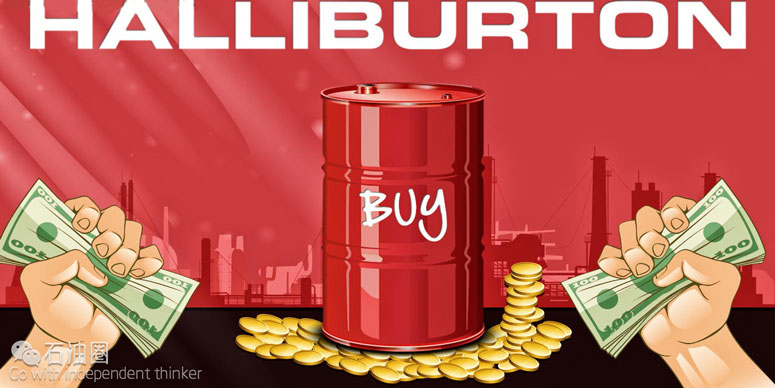Halliburton ready to sacrifice market share to boost profit
HOUSTON (Bloomberg) — After boosting North American sales for the first time during the downturn, Halliburton is determined to raise prices for its services to lock in profits in the world’s largest fracing market.
CEO Dave Lesar said he’s even ready to give up market share to cheaper rivals if that’s what it takes to return to a solid record of profitability. The company surprised investors by posting a penny-a-share third-quarter profit Wednesday, due in part to two-years of brutal cost-cutting during the downturn. Halliburton also benefited from an increase in oilfield drilling as crude prices strengthened from February lows and customers went back to work.
“I never thought I would be so satisfied by barely making a profit,” Lesar told analysts and investors Wednesday on a conference call to discuss the earnings. “Our customers’ animal spirits remain alive and well in North America, even though for some, they may feel caged in a bit by cash flow constraints in the short term.”
Halliburton rose the most in six months as oil prices climbed above $51/bbl. Shares were up 4.7% to $49.26 at 11:40 a.m. in New York after earlier climbing as much as 5.8%, the biggest intraday gain since April 6.
Surprise Profit
The Houston-based company eked out net income of $6 million, or 1 cent a share, according to a statement Wednesday. Investors had been braced for another loss comparable to the $54 million, or 6-cent, loss Halliburton posted a year earlier.
“In the U.S., we believe we now have the highest market share we’ve ever had,” Lesar said. “At this point, if we have to give some of it back to move margins up, we might take that approach.”
Oilfield service prices are expected to improve next year, the company said Wednesday, putting within reach an operating profit margin not seen in more than four years.
“We’re definitely going to need some price to get back toward the historic margins that we’ve had in the past,” CFO Mark McCollum said on the investor call. “We’re going to be pushing as hard as we can to get back to 20% as quick as we can.”
Business Growth
Halliburton sales in the U.S. and Canada had plunged by more than two-thirds during the downturn as customers slashed spending to survive a global oil rout brought on by a glut of new production. Executives at Halliburton and its largest competitor, Schlumberger, declared at the end of July that the worst may be over after oil prices bounced off their low in February and the U.S. land rig count hit bottom in May.
“There’s definitely light at the end of the tunnel as it relates to North America onshore activity,” said Byron Pope, an analyst at Tudor Pickering Holt & Co. in Houston, who rates the shares a buy and owns none. “Now it’s just a question of what’s the timing and the magnitude of the recovery.”
Lesar credited the surprise third-quarter profit in part to “relentlessly managing costs” as the company took advantage of an uptick in drilling in U.S. shale fields, according to Wednesday’s statement. Explorers boosted the U.S. onshore rig count by 100, or 25%, during the third quarter, according to Baker Hughes.
‘Barroom Brawl’
Most of the oil-services sector this year has been operating at a loss in North America. Halliburton still isn’t expected to report a profit in North American operations until the first quarter next year, Pope said.
The amount of hydraulic-fracturing equipment active in the U.S. stands at 7 million horsepower throughout the industry, Jeff Miller, president of Halliburton, said on the call. With about 70% of the industry fleet being used, more will have to go back to work in order for service companies to have pricing power.
While the world’s contractors have begun trying to boost service pricing as activity climbs, Miller has lately characterized negotiations with customers as a ” barroom brawl.” The pricing battle was on display at this week’s Oil & Money conference in London, where BP CEO Bob Dudley said he’s aiming to get 75% of the cost reductions producers won during the downturn to “stick.”
Operators will continue to be conservative in their spending as they plan for oil prices to stay below $60/bbl for the foreseeable future, making many higher-cost projects uneconomic. Dudley said BP is unlikely to invest in new deepwater frontier exploration.
Lesar said Wednesday Halliburton will have to strike a balance between providing the service its customers need, while raising prices enough to generate profits for its own shareholders.
“It’s going to be a give and take,” he said on the investor call.
Profit Margins
Halliburton last reported an operating profit margin of 20% for North America in the second quarter of 2012, said Andrew Cosgrove, an analyst at Bloomberg Intelligence. The company’s margins in the region were once as high as 29% a year before that, he said. For third-quarter 2016, Halliburton’s margin of operating loss was 4.1%.
Shares rose 1.7% to $47.89 at 8:57 a.m. in premarket trading in New York. West Texas Intermediate, the U.S. benchmark for crude, slipped 0.2% percent in the quarter to average about $45/bbl.
The margin of operating loss in North America improved more than expected, Angie Sedita, an analyst at UBS Investment Research, wrote Wednesday in a note to investors.
“Total revenues were 1% below our forecasts, however, impressive cost controls across all regions led to higher margins across the board with operating income 65% above our forecasts,” Sedita wrote. “We view the results as a modest positive for the stock.”


 石油圈
石油圈


